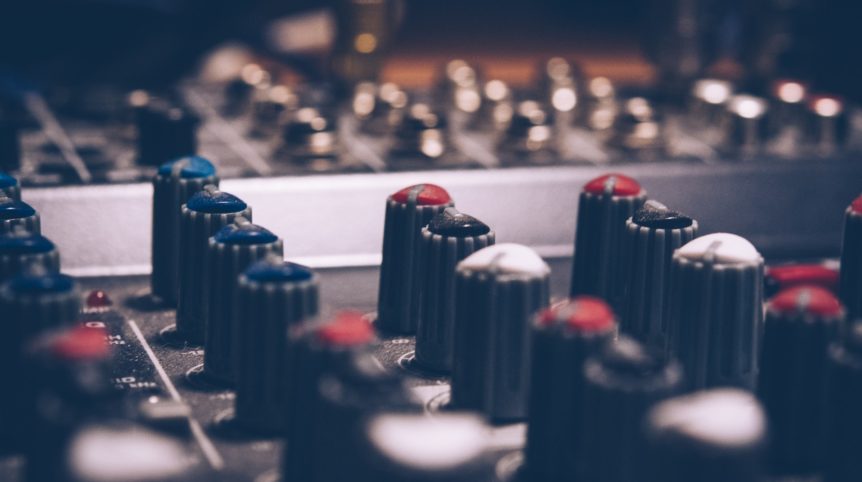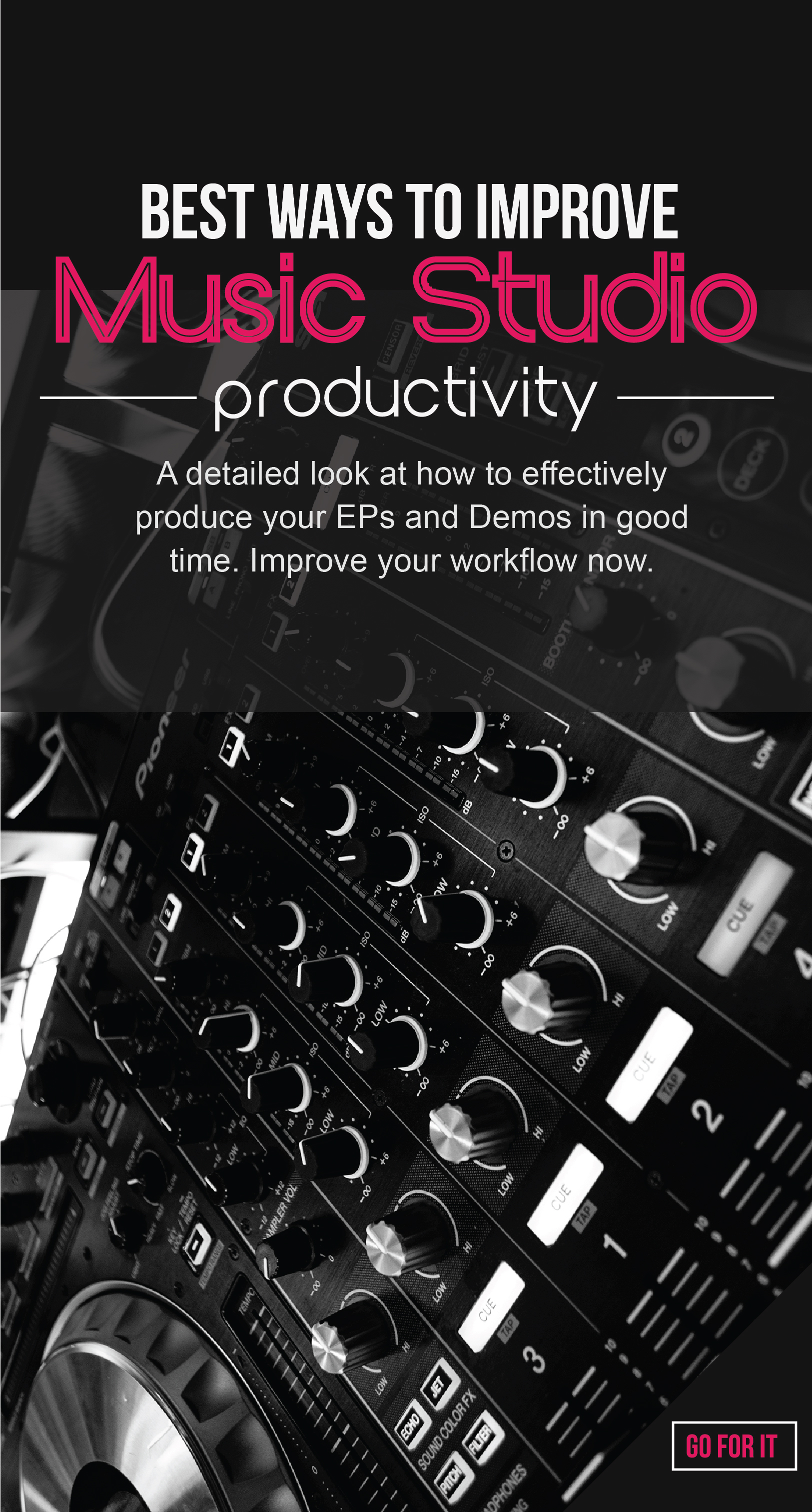 Is that EP taking a little too long to get out into the world? Time is of the essence, and studio productivity is absolutely everything…
Is that EP taking a little too long to get out into the world? Time is of the essence, and studio productivity is absolutely everything…
Being productive in your home music studio can often be easily compromised by the sheer fact that, well… you’re working from home. And we all know best, that the home environment offers a million distractions… And, in all probability, several more await inside your studio…
Despite all of this, it is entirely possible to effectively get tracks produced and finished in your studio. Naturally, having a decent plan in place as far as going about your recording sessions helps a great deal, sure… (Discussed later).
However, believe it or not, the construct of your studio environment also has much to do with your level of productiveness. The overall setup, the functionality, the acoustics… all of it. Which is why today, we’re look tips to increase your productivity as a producer.
Basically, a mixed variety of components go into not allowing time to get the best of you. We’ll break these down into three major sections. Namely The Built Studio Environment, The Working Environment, and Workflow. So, what exactly is the quintessential mixology to getting us producing music, and finishing tracks in good time? Read on.
Part One: The Built Environment
In all likelihood, your options are limited when it comes to the space you’ve dedicated to use as a studio. It could be a small extra bedroom, or you’re lucky enough to have a whole basement at your disposal.
Whatever your architectural constraints are, there is much that should be controlled about the physical environment you are working in. These aspects can have a huge impact on your recording and mixing process later on. We’re talking more time unnecessarily spent correcting and editing sound issues that could easily have been prevented beforehand. Here are a few physical aspects to consider on how to improve productivity in your music studio.
1. Poor Acoustics Equals Less Studio Productivity
A weird thought, right? But totally relevant. One of the ultimate time wasters in studio is having to rectify less than perfect audio. Often, this would be a result of poor acoustics in the space in which you are working. Static and general background noises can taint and interfere with the production process in studio. More often than not, smaller workspaces result in higher levels of sound in reflections and static in a studio.
The acoustics of your physical space is something really vital to getting the job done efficiently. The following are some environmental issues you may face:
What are Sound Reflections?
Once sound waves leave a sound source, i.e. studio monitors, or music instruments or vocals, they travel in all directions. When these waves collide with flat surfaces such as walls or tables, they bounce off and reflect back into the room. These reflected sound waves, usually taint the original sound coming from the source. This is often either by increasing or decreasing its amplitude. Basically, in a nutshell, while we are listening to sound in a room, we’re actually listening to multiple versions of the same sound in one go.
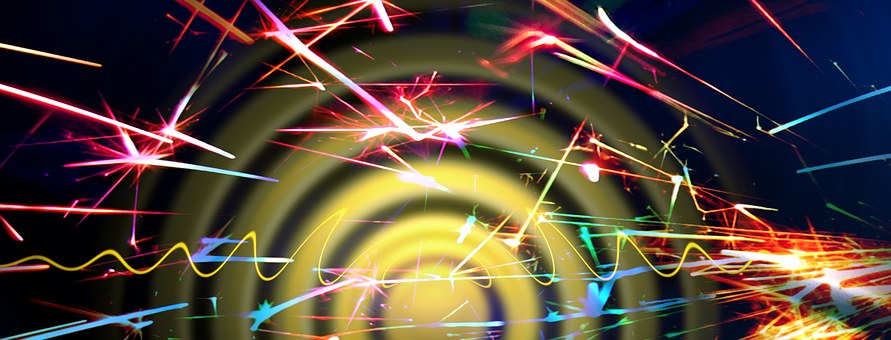
Illustration of sound waves reflecting.
Why are Reflections a Problem?
Reflections are highly problematic for a number of reasons, all which have an impact on studio productivity.
Firstly, we’ve mentioned previously that sound reflections alter sound. They produce a version of the music that is not truly a representation of what was emitted from the sound source. This makes for a crummy, far from pro output in end. And generally, the only way to deal with this problem is to start again… and who wants to do that, right? Starting again means less studio productivity. You’re possibly set back several hours or more even a day.
Secondly, reflections can overload microphones, which ultimately leads to what we call feedback. This is that loud, awful, screechy sound we usually get coming from amplifiers. Again, editing feedback out afterward is an almost impossible task, and generally would require starting over. You really don’t want to have to keep re-recording work.
Thirdly: the physical impact. Yes, sound reflections can have an adverse impact on your hearing. That is, potential hearing loss. Being in a space that does not absorb sound reflection well, coupled with loud studio monitors could be problematic. Because of this, it is recommended that you take breaks between recording and mixing to give ease to yourself.
Ah, but treating those acoustics could more than do the trick… Which we’re getting to…
Background Noise
Our omnipresent enemy…background noise. It is everywhere, and it is ambient, but it must be tamed.
It is absolutely important to ensure that space you’re working in allows for the minimum interference of background noises. Yes, it is true that some of these are inevitable (like static noise, which is sometimes more of a technical problem). However, environmental sounds can also trickle into your studio, and mess with things… Naturally, the solution is to have your doors and windows shut, but also acoustic treatment and soundproofing help a great deal.
If you don’t deal with this issue before hand, you’re faced with having to edit out the sounds after… If not record again, both of which mess with time.
Why does all of this have to do with Studio Productivity?
Well, if you haven’t gathered already… time. The time spent editing out background sounds and reflections or re-recording altogether is adverse to studio productivity.
It’s very tempting to think you can just go along recording with poor acoustics, believing you will just edit after…. Just digitally filter out those noises… But realistically, even so, you’d have the issue of distortion caused by digital filtering. Free Programs like Audacity offer this noise elimination function, but overdoing it also eliminates audio quality. To do this at a professional standard requires a lot of time and effort that could be spent in better ways.
It is really best to just deal with the physical environment while building/setting up your home music studio before hand. How to do this? That’s our next point.
2. What can I do to Improve Acoustics for Studio productivity?
So we’ve pretty much established that the built environment of your studio can be problematic in its own right, in a number of ways. But how exactly can we solve this problem?
Acoustic Treatment
So, a well-known suggestion to solving your woes is to simply treat your room for acoustics. Who’d have thought, huh?
But, a lot newbies think that this could just be skimped out on, or not considered at all. It can be beyond tempting to abandon this aspect for the sake sparing some cash. But, in all honesty, if you’re not willing pay with cash, paying with time is the alternative…
What Are Acoustic Panels?
Acoustic Panels are a popular form of sound absorbers for recording studios. These are typically used in both professional and home recording studios as form of sound treatment. Acoustic panels are intended to absorb sounded frequencies ranging from mid to high Hz.
Basically, the idea is, you can play music from whatever source and record without the worry of having sound reflections. Background noises and static (to some degree) can also be lessened this way. In addition, seeing as sound doesn’t build up and increase in amplitude, the issue of hearing loss can be managed.
Foam Panels – These are typically less expensive than Fiberglass. Foam Panels are mounted directly on to the walls of a studio using spray adhesives. They typically absorb frequencies down to about 500Hz. Take a look at acoustic foam panels here on Amazon.
Fiberglass Panels – These panels are generally a little more on the pricier end of things, compared to foam. Reason being, foam panels are a lot denser and therefore absorb sound a lot better. Fiberglass panels are able to absorb a broader range of frequencies, going down to about 100hz. An example of fiberglass panels can be seen for comparison here on Amazon.
What are Bass Traps?
Bass Traps are also a form of frequency absorption. These are intended for the absorption of much lower frequencies that cannot be captured by acoustic panels. Bass Traps are typically placed in the corners of a room, where lower frequencies are suggested to gather and amplify.
Porous Absorbers – This type of bass trap is generally smaller in size, and less costly. They are easy to make at home, however are also limited in terms of low frequencies absorption range.
Resonating Absorbers – This type of bass trap tends to absorb frequencies considerably lower than porous absorbers rather well. Resonating absorbers usually absorb a narrower spectrum of frequencies, whilst performing a lot better on the lower end. These absorbers have to be mechanically tuned to absorb the resonated frequencies, whereas porous absorbers do not.
What are Diffusers?
A sound diffuser is meant to treat aberrations of sound in a room such as echoes and reflections. It is an acoustic panel that, rather than absorbing sound too much, disperses it evenly within the room.
What are the alternatives?
You need to treat your room acoustics in general for a professional sound, in addition to studio productivity. However, acoustic treatment can indeed be a costly exercise, so there are alternative methods that you may consider.
- You could consider alternative materials such as using blankets, particularly when recording vocals. Create a booth around the microphone using the blankets so ward off static and background noise. This could help you avoid having to edit out the vocals later.
- You could also consider using carpeting as an alternative to acoustic panels (read more on this here in detail). Although by far not the best alternative, on a budget you could use this method to reduce reflections.
In all, however, absolutely consider saving up some money to investing in good acoustics. This can saving you a lot of editing and re-recording in the long run, as the built environment itself deals with noise and reflections.
3. Be selective about your Studio Monitors
The size of the built environment that you’ve chosen to use as a studio greatly influences the severity of sound reflections in the room. Generally, you’d be a worse off in a much smaller room… However, this is only if no acoustic treatment is not present whatsoever. In addition to considering how you’d treat your room to prevent the impact of reflections, consider your studio monitors. This would be based on the size of your home music studio.
Monitors are a necessary set of equipment to have to fine-tune the intricate details of your mixes. Monitors are a source of sound emission a room, likely to cause increased reflections. To lesson the harshness of reflections in your space, you must be selective about the type of monitors you use. For instance, in a smaller bedroom setup, avoid the use of larger studio monitors. Background noise and reflections can really heavily build and amplify where space is confined. So for considerably smaller rooms, you want to consider smaller studio monitors.
Monitors for Small Rooms
For a bedroom setup, it is more recommendable to try stay within the 5” to 8” woofer element region. For very small rooms, you want to look at something like the KRK Rokit 5 Monitors on Amazon. Conversely, the JBL 5” Monitors are also worth comparison on Amazon.
If you’re working with a little more room, try something like the JBL 8” Monitors on Amazon.
Monitors for Larger Rooms
So… you are in luck have a much larger space to work from, like basement? Well then, you need not be too restrictive with the size of your studio monitors with space to your advantage.
For larger studios, you may want to observe something like the JBL 10” Powered Studio Subwoofer. Or, have a look at the KRK 10” Powered Studio Monitor Subwoofer, both available for comparison on Amazon.
How do Studio Monitors Impact Studio Productivity?
Ultimately, yes, studios are not an actual part of the built environment of the studio. However, during the mixing and mastering processes at the end, they interact directly with the built setup but emitting detailed sound. In a room not aptly treated for acoustics, the increased reflections can toy with your sound perception as the mixer. This can ultimately impact studio productivity, as your mixing process can be made all the more complex you are not accurately hearing the details of your work. This could lead to the tedious process of mixing and remixing work to rectify the issue.
Part Two: The Working Environment
Now that we’ve worked out the key aspects of our built studio environment, let’s have a look at our working-space. All in the name of studio productivity…
By the “Working Environment”, we’re specifically observing the setups of equipment in our workspace in order to be as productive as possible. The way in which you’ve laid out elements such as microphone/instrument connections can impact workflow. Similarly your actual mixing setup has everything to do with how effectively you work. Let’s see what these elements are, and how to deal with them.
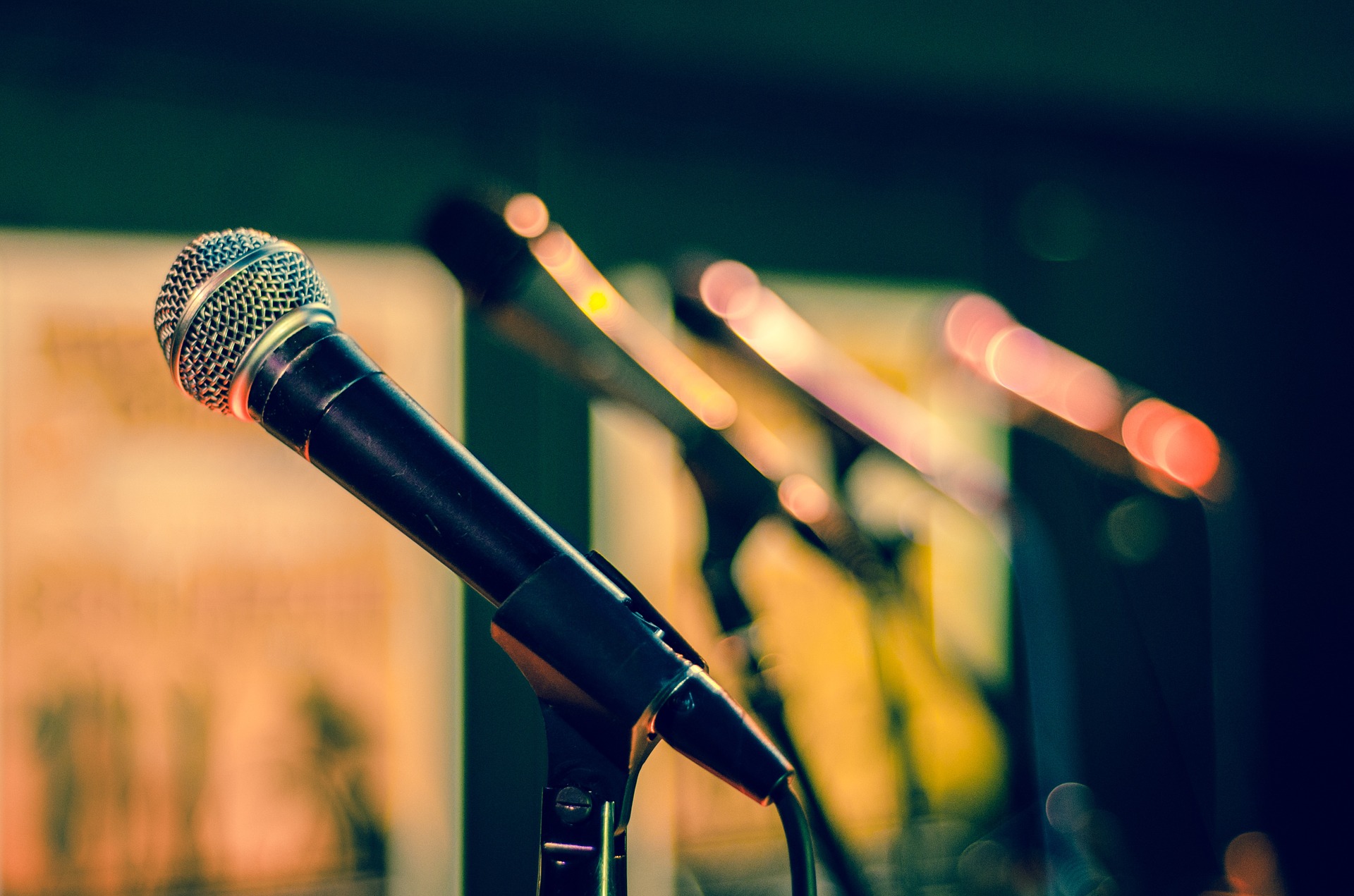
Setting up your workspace for studio productivity
1. Having the Necessary Equipment and Instruments Ready
You may truly want to scoff at this one but, believe it or not, it totally matters. This is especially so if you will be working with a group of musicians/artists and a number of instruments. During recording sessions, the process of plugging and unplugging equipment is a mega buzz kill. Time is spent performing yet another task that could have been avoided. As far as possible, have the required gear ready for the sake of studio productivity. Also have instruments microphoned up correctly… leading us to our next point…
2. Mic/Connect Up According to the Appropriate Instruments
Depending on the type of instruments you’re using, there are ideal setups to record each using microphones. Of course, if you’re recording multiple tracks that need a variety of instruments, then shifting gear around is inevitable.
Here, we will briefly cover setups for guitars, drums and vocals. These would typically be the more commonly used instruments in studio. So understandably we won’t be covering every possible instrument. This is specifically for the purpose of saving time during recording sessions. You don’t want to have to mic up in between.
Best Microphone Setup for Acoustic Guitars
Finding the ideal recording setup for acoustic guitars can be a debatable matter. However, professional sound engineers have a few generally agreed upon techniques to getting the best out of your guitar recordings.
Before we dive into the actual setup up techniques, let’s briefly take a look at how guitar project sound. This is to understand, on our own terms, how to place the microphone when recording.
How do Acoustic Guitars Project Sound?
Acoustic Guitars produce a variety sounds that are projected outward through the body’s opening. Not only does the wooden body of the guitar itself resonate, but also the vibrating air within it. The paneling inside the guitar influences much of the sound traits of the guitar in an intricate manner. However, the way the air resonates is a simple process, allowing sound to project outward. This also helps with keeping the guitar’s lower registers sustained.
One of the key aspects to understand here, however, is the guitars frequency projection in relation to projected sound. The way a guitar is typically constructed allows for a resonance of around 100Hz. The effects of this would be harshly exaggerated depending on how close the microphone is brought towards the guitar’s sound-hole.
How to Set Up Microphones for Acoustic Guitars
First of all, you want to consider large condenser microphones to record your guitars. (For more on appropriate types of microphones for various instruments, check out this article).
The “Vanilla” Position – The first position we’ll observe is the vanilla position. Only one microphone is required for this. This position entails placing the microphone more or less where the neck meets the body of the guitar. The mic directly faces the guitar in this position. This way, we achieve a balance of body and panel resonances while still obtain the details of the strings.
Front of the Body – This position suits those who feel that too much focus is placed on the string action the guitar. For this, sound engineers believe it is best to position the mic at a distance from the body. It would be placed directly ahead of the sound hole, again at a distance, to capture some the body’s characteristic resonance. This is, after all, how a guitar is meant to be heard.
Best Microphone Setup for Acoustic Drum Kits
When it comes to recording drum kits, several components of the drum set are involved. Because of this, it is important to be aware of what element will/will not be needed when recording songs. The aim being to save time by not assembling unheeded bits and pieces.
Drum kits would typically include elements such as a snare, a floor tom, kick drum, tom-toms, cymbals, crash and ride. This list may include a lot more depending on the drummer. Because of this wide variety of elements that could be included, there is often no one way to mic up a drum set. It would often depend on what combination is being recorded at the time.
So… How to mic it up?
Overhead Setup
One of the first and simplest ways you may consider recording your drums is by having an overhead microphone. This would be preferably a large condenser mic, place in front or behind the drums. (You may want to refer to this article for more detail on microphones for drums).
The most ideal microphones for this setup would be a larger condenser microphone, or a ribbon/room microphone. These are highly sensitive microphones that offer really beautiful recording sound. You could check out the following microphones on Amazon:
For overhead mics, you may have to play around with the exact position of the microphone beforehand. Once you’ve worked this out, go ahead and set up kit for recording sessions.
Dual Overhead Setup
Another way to go about this, for the purpose of creating balance in sound is to simply have two overhead mics on each half of your drum kit. Again, you may have to play around with exact positioning in this case.
Individual Microphones
Alternatively, you could choose to mic up your kit with individual purpose specific microphones. Generally, these would be dynamic rather than condenser mics. Each mic would go towards recording each individual element at the same time.
Best Microphone Setup for Recording Vocals
Contrary to what you may think, recording vocals in studio can actually be a tricky process. The more commonly used microphones for recording vocals include Condenser, Dynamic and Ribbon Microphones. Ribbon mics, however, tend to be the least used as a result of their highly sensitive nature.
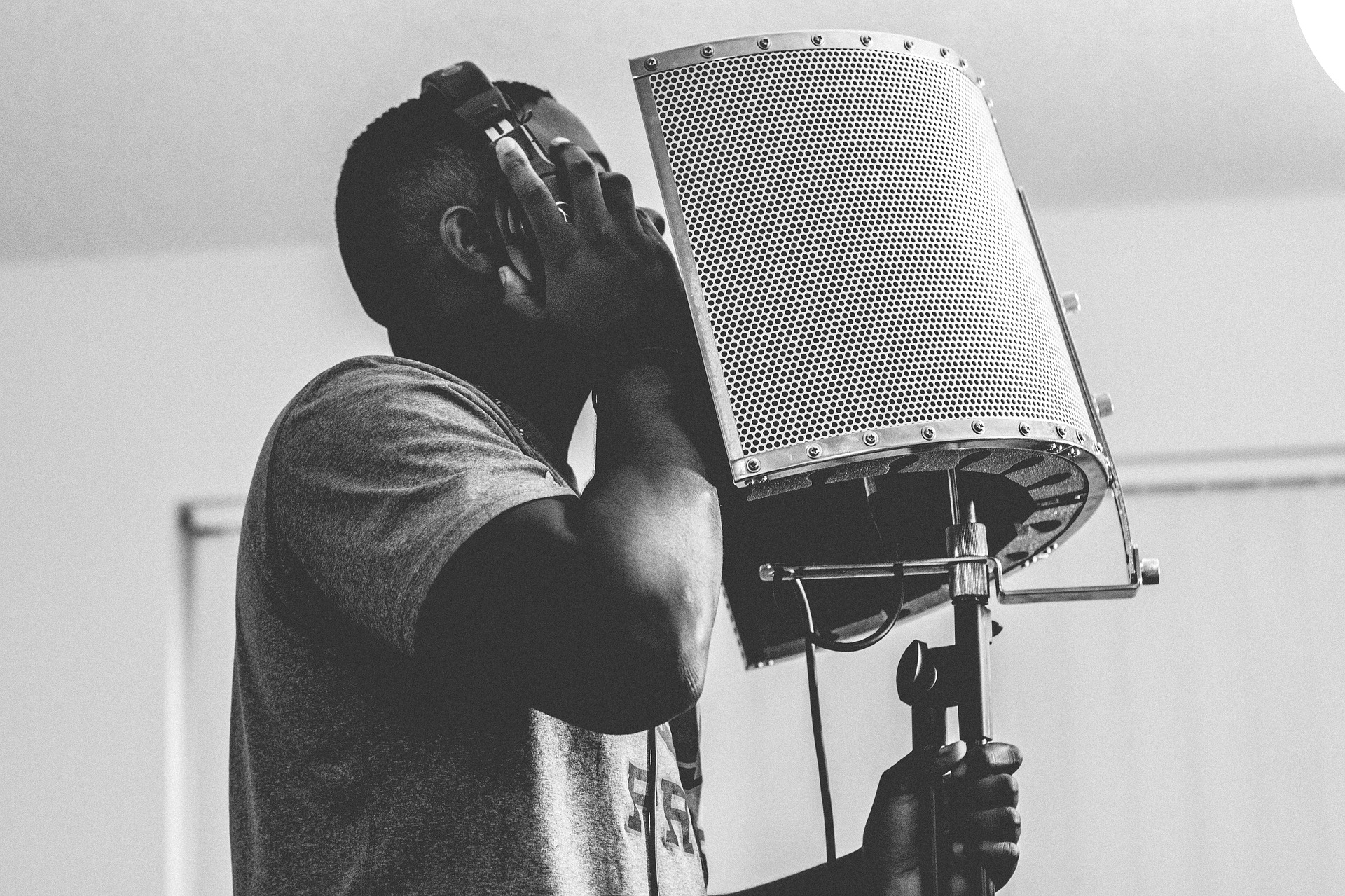
Recording Vocals in Studio
There are few items necessary for recording vocals in studio. Namely these would include:
- Microphone Stands
- Pop Filters
- Additional sound insulation (i.e. reflection filters, blankets etc)
Microphone Stands
Firstly, you want to position your stand as far away from windows/doors if possible. This is to lessen the possibility of background noises being recorded. Next, if the stands are placed in front of a wall, where the mic will be facing there should be some kind of insulation. In other words, this would be behind the vocalist singing into the microphone.
Have a look at these mic stands on Amazon for Comparison:
Tripods:
AmazonBasics Tripod Microphone Stand
Circle Base Stands:
Pyle Compact Base Microphone Stands
Pop Filters
A Pop filters is a very simple tool that helps prevent microphones from damage. These come in particularly handy when using sensitive condenser mics, and the vocalist does not have a subtle sound. Pop filters help eliminate the effect of ‘plosives’ in your recordings. They typically mount directly to your stand.
Here are examples of Pop Filter and Windshield on Amazon:
Pop Filter:
Mugig Pop Filter Double Nylon Layer
Shield:
Sywon Metal Mesh and Foam Layer
Have the Correct Mixing Setup for Studio Productivity
Working without the correct mixing setup can also have a great impact on workflow and studio productivity. This is mainly in terms of our perception of sound, in relation to where and how we’re positioned in the room.
How can the wrong setup impact studio productivity?
Aspects such asymmetry in your desk/monitor arrangement can influence whether you have a balanced perception of sound during your mixing process.
Balanced perception matters for a number of reasons. Firstly, it can impact your panning of elements to the left or the right during the mixing process. Generally, this would be caused by not having your studio monitors equidistant to the walls of the studio. Ultimately this could result in an off-centered sound in your mix.
Reflections can also be an issue depending on the size of your room and how you’ve laid everything out.
What is the Correct Mixing Setup?
For a more detailed, in-depth answer to this, you may want to check out this article. However, here are a few quick tips you can implement in your home studio.
Depending on the size of your home recording studio, you want to either have your setup in a horizontal or vertical arrangement. For bigger spaces such as a basement, you could have your mixing desk facing down the shorter length of the room. The advantage being that the sidewalls don’t emit reflections as they are much further away.
For smaller studio, like in a bedroom or small office, the opposite setup is better. Have your desk and monitors facing the longer length of the room.
Lastly, you want your listening position (aka the sweet-spot) to form a 60-degree angle in relation to your studio monitors. This is such that sound flows in a balanced form toward your ears while mixing.
Ultimately, having a good mixing setup eases the mixing process in that you are more likely to not have to go back and re-edit. Having good overall panning is essential, and your studio productivity wouldn’t be hindered by having to literally rearrange your mixing equipment for the correct sound.
Part Three: Workflow
Now, on to the actual working in studio part. That is absolutely everything to do with your overall music studio productivity. There mainly three types of task you would want to achieve in your studio. Namely, these would include Writing, Recording and Mixing. Ultimately, Mastering also comes into play.
One of the key aspects that affect productivity in a studio is the tendency to overlap tasks. It can generally be very tempting to write or alter a few lines during the recording process. Similarly, you may be tempted to go back and record while mixing. It is completely imperative to separate these tasks.
Writing Sessions
This is typically the first phase of any musicians work. Writing entails the lyrics and the musical composition of the song. During this process, the lyrics and music are not only created but also refined until the song is ready for recording.
There is no set amount of time it should take to get through this creative process. But what is important is to finish the song-writing component before progressing on to recording.
Once you’ve pretty much got your is the writing done, it is important to have the following prepared for the following step, recording:
- Tabs or sheet music for all necessary instruments
- Chord charts with lyrics
- Lyric sheets
This prepares you and your fellow musicians for the recording process.
Recording Sessions
For optimal studio productivity during your recording sessions, it is advisable to start off with a few rehearsal sessions. Rehearse enough so that your actual recording sessions go smoothly.
During the rehearsal phase, you also want to ensure that you have a list of equipment and setting for both instrument and gear. The intention here is to help with saving time when actually recording. It is also very helpful to create a timeline for your recording sessions, including when to take brief breaks if necessary.
Hereafter, you can pretty much record according to the working plan you’ve created. Having a plan for the process assist greatly with studio productivity.
Mixing Sessions
Throughout this article, we’ve pretty much touched on ways in which the mixing process can be made simpler. We’ve looked at studio productivity in your recording studio by way of the built and working environment and how these can impact workflow. The process of mixing, however, is basically the compilation of the entire various elements you’ve recorded into one song. It also involves making the sound workable and balanced.
A basic outline of this process could be something like:
Relative Levels
- Compile a solo sub-mix and re-craft the levels on each
- Mix the sub-mixes to achieve a balanced sound in the song
Processing and Effects
- Work on the primary elements of each track such as limiting, EQ, compression etc. You can this until you’re satisfied.
- Work on effects that involve enhancing the sound, rather that fixing or improving as in the previous step.
Final Levels
- Go through your sub-mixes as well as your overall mixes again. Processors tend to alter sound.
- Go through this entire process again until you’re satisfied with the track.
You may have your own additional steps you’d like to add to the mixing process. However, this is basic work plan. And as mentioned earlier, it is always best to work according to a plan for optimal music studio productivity.
